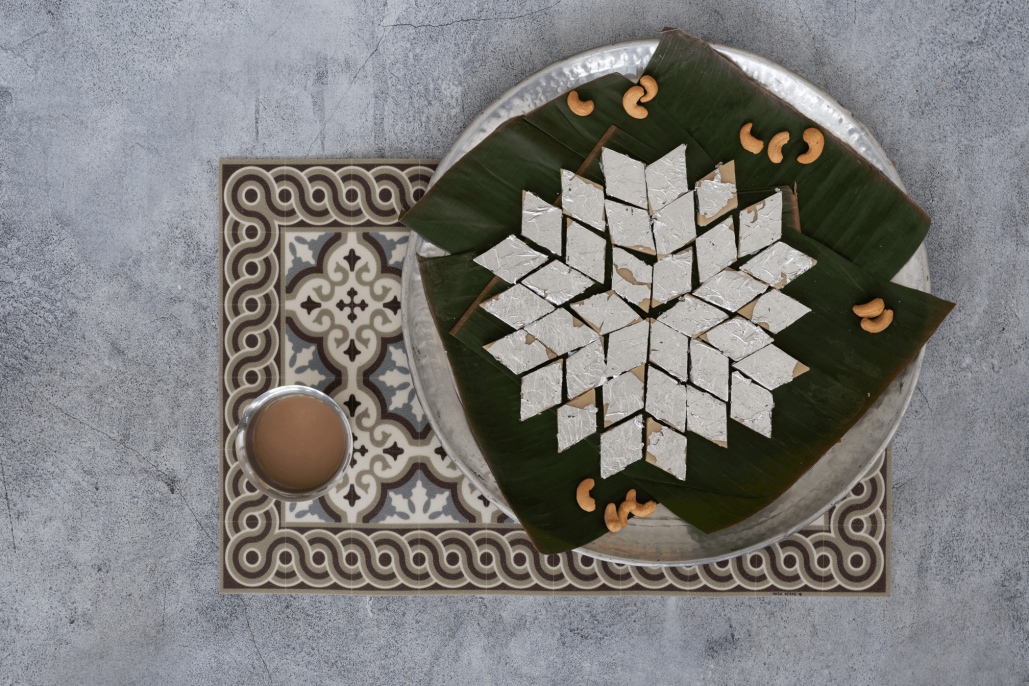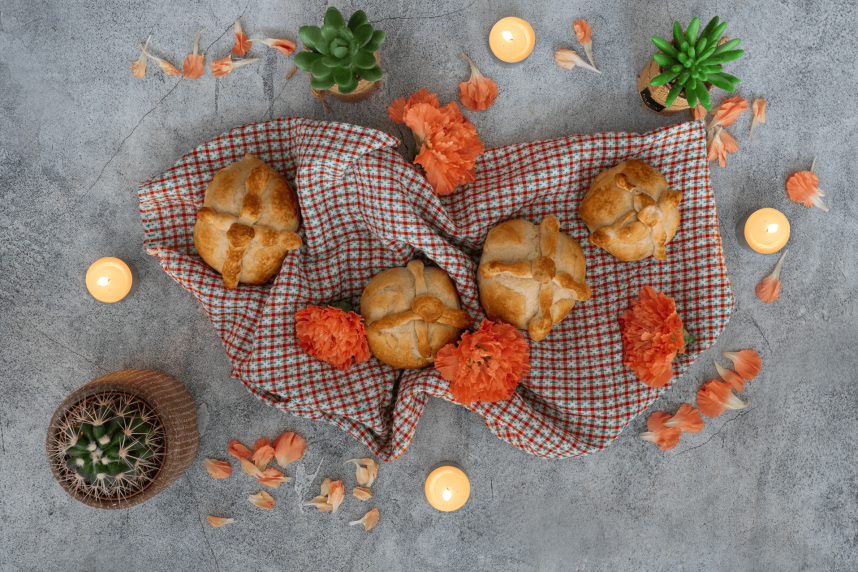Roset Pieper Marlijn van Ingen & Julia Daalder Roset Pieper & Sander van der Meij
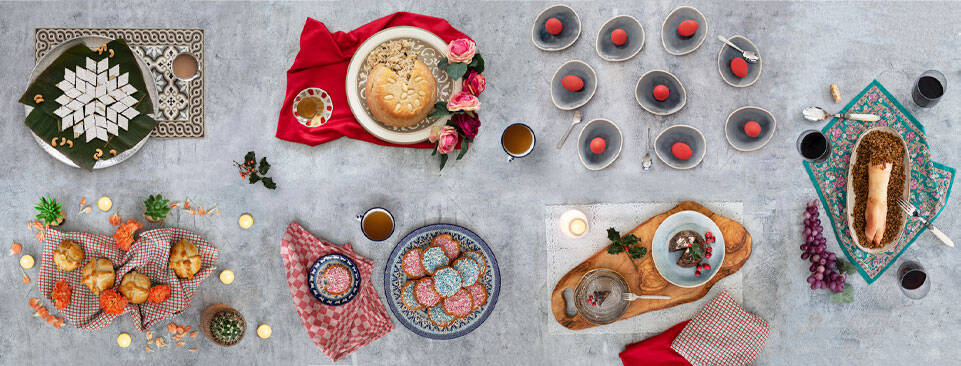









Food eaten during festivities is often filled with meaning, steeped in symbolism and rich in tradition. Different cultures have different culinary celebrations. We asked a Greek, Turkish, Mexican, Dutch, Indian, Italian and English person to share their most beloved, crazy, or meaningful celebratory dish.





Food insights
3 min
Different cultures have different culinary celebrations.



What:
Dutch biscuits, spread with butter and covered with blue-white (for boys) or pink-white (for girls) aniseed sprinkles.
When:
Birth
Why:
Every birth in The Netherlands is celebrated with ‘beschuit met muisjes’. The aniseed stems make them look like little mice, hence the name ‘muisjes’.




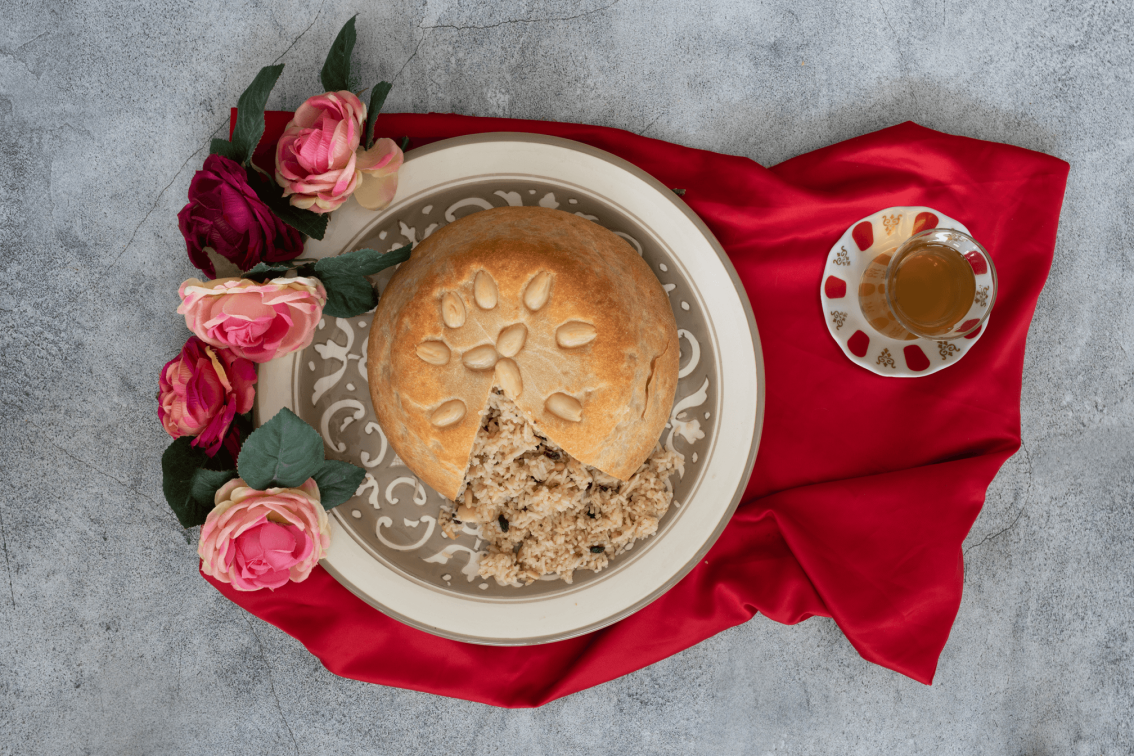

What:
Dough dome filled with fragrant rice, chicken, currants and nuts.
When:
Wedding
Why:
The nuts represent the husband and wife, the currants their prospective children. The pastry shapes the roof of the house.




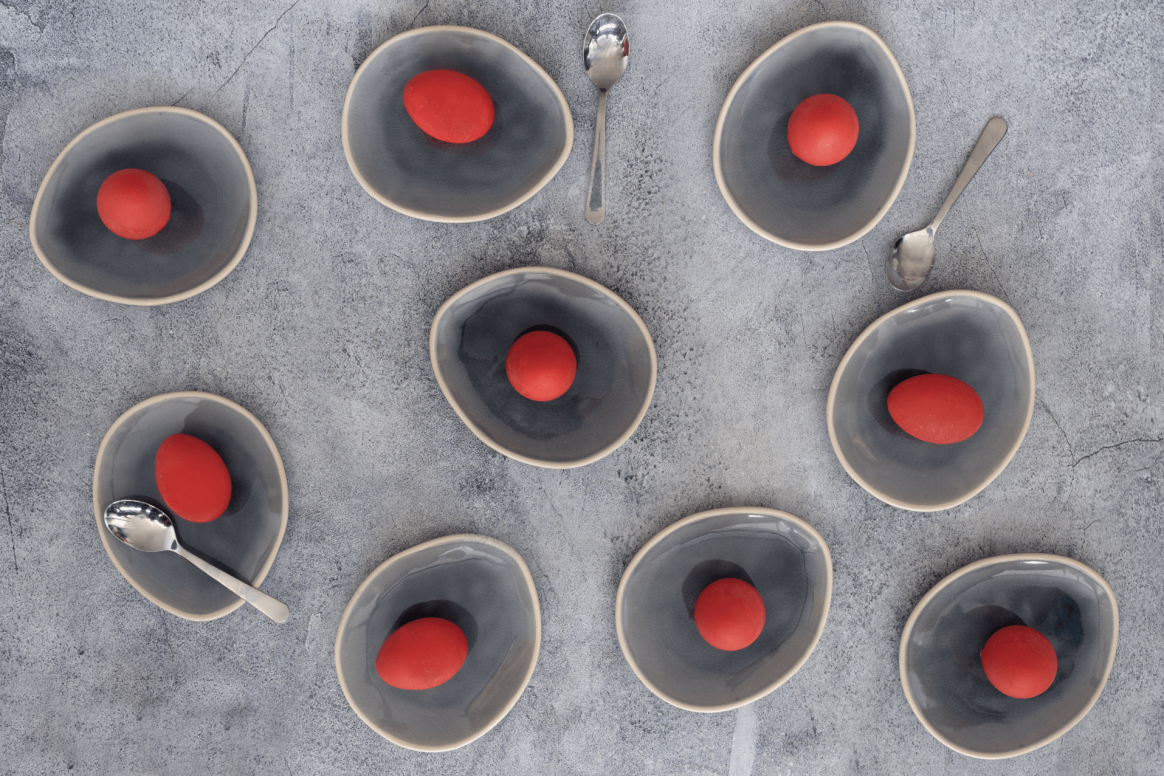

What:
Shiny red boiled eggs
When:
The evening before Easter Sunday
Why:
The eggs are tapped together, while one person says: “Christos Anesti!” (Christ has risen!), while the other person says: “Alithos Anesti” (Indeed he has risen!). This symbolises Christ’s emergence from the tomb and the blood that he lost.




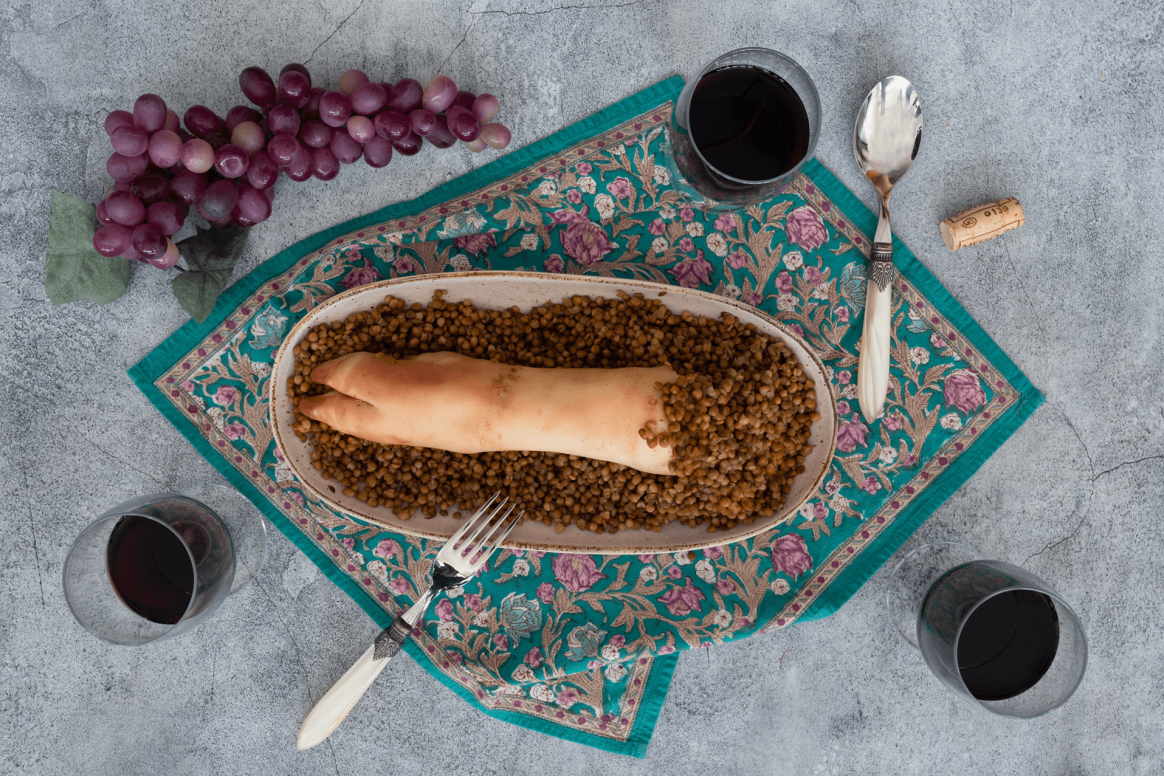

What:
Filled pork paw called zampa,
and boiled lentils
When:
New Year’s Eve
Why:
The lentils symbolize prosperity. In ancient Roman times, people would fill their pouches with lentils, hoping one day they would turn into coins.




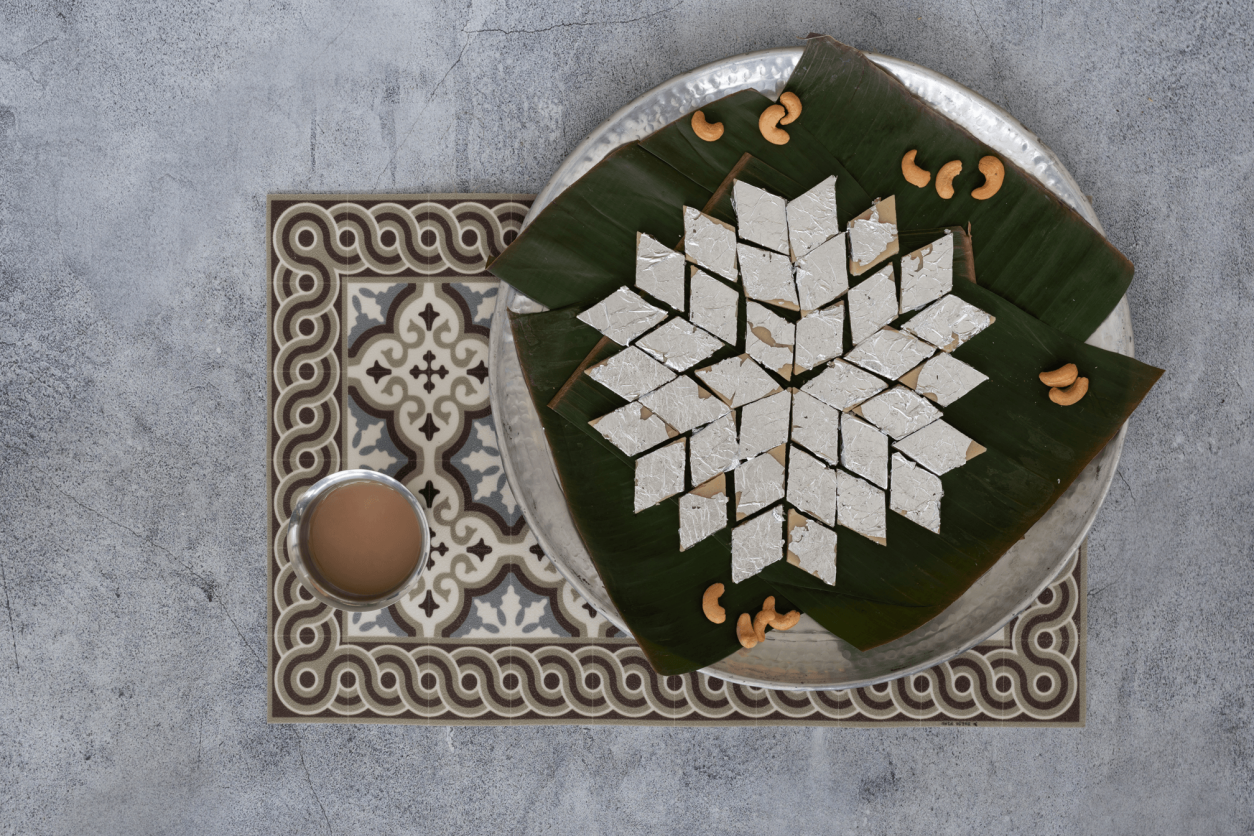

What:
Diamond shaped dessert made out of cashew nuts, sugar, cardamom and ghee, covered in edible silver.
When:
Diwali/Ganesh Chaturthi
Why:
Kaju Katli brings good luck and prosperity to the home where it’s served. The edible silver signifies luxury and appreciation for the ones eating it.




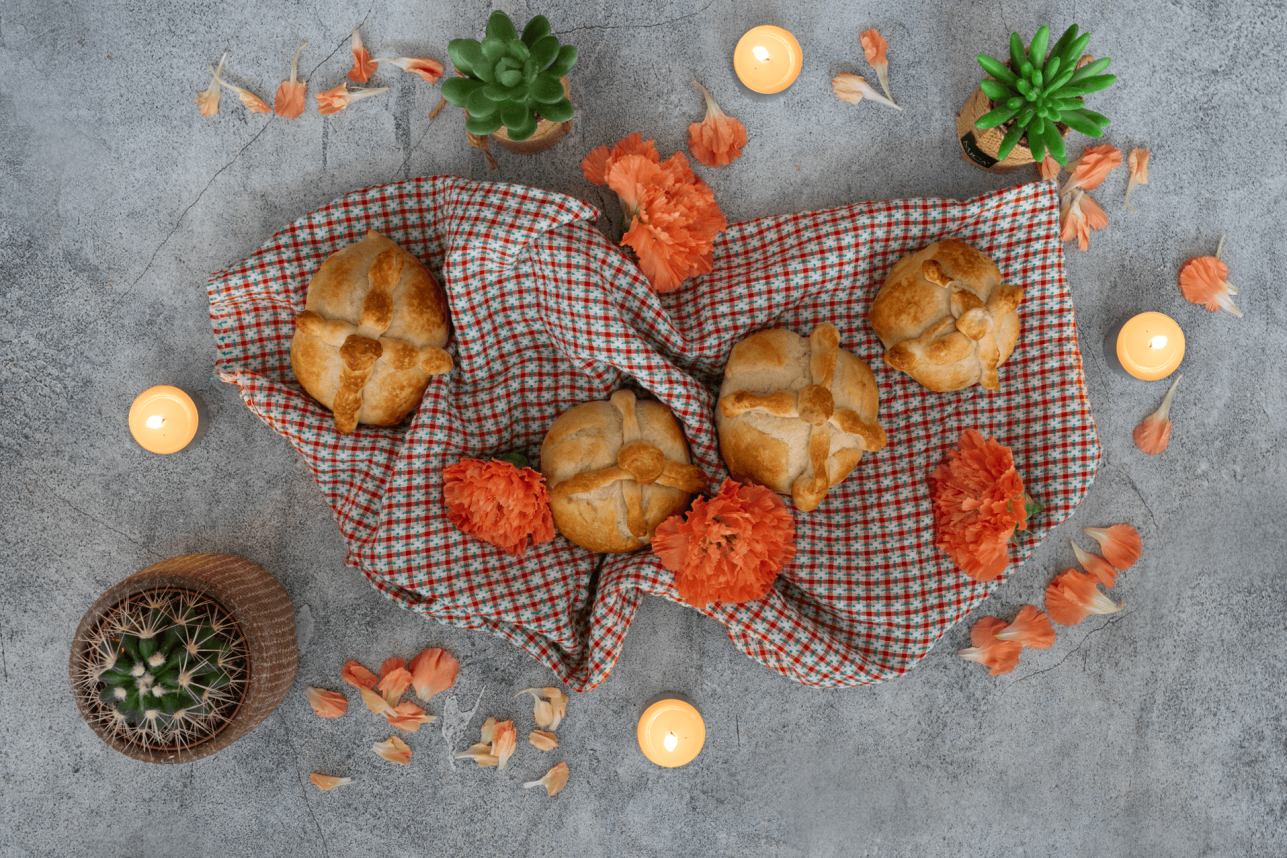

What:
Pan de Muertos, bread of the dead, flavoured with aniseed and orange.
When:
Día de los Muertos
Why:
Spirits of the dead are guided home by the smell of their favorite food. An essential offering is Pan de Muertos. The cross on top symbolizes the bones of the dead.






What:
A steamed pudding, filled with spices, dried fruits and currants. After steaming, strong liquor is regularly poured over to soak into the pudding.
When:
Christmas
Why:
Traditionally the pudding is made with thirteen ingredients, representing Jesus and his twelve Apostles.




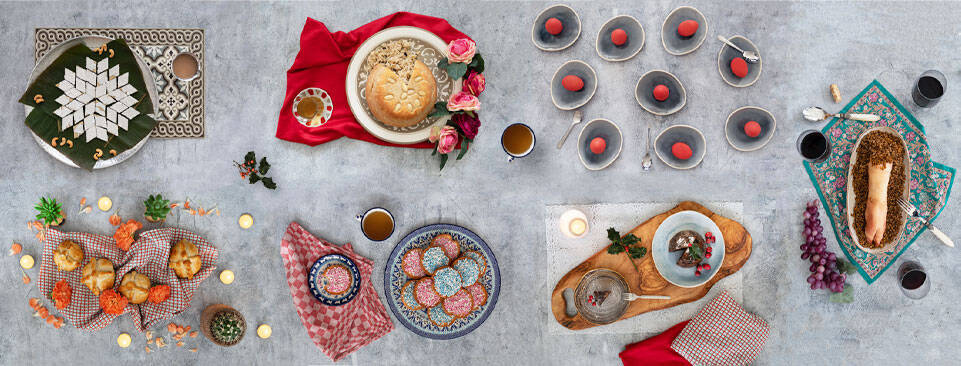







Roset Pieper Marlijn van Ingen & Julia Daalder Roset Pieper & Sander van der Meij
Food eaten during festivities is often filled with meaning, steeped in symbolism and rich in tradition. Different cultures have different culinary celebrations. We asked a Greek, Turkish, Mexican, Dutch, Indian, Italian and English person to share their most beloved, crazy, or meaningful celebratory dish.


3 min

What:
Dutch biscuits, spread with butter and covered with blue-white (for boys) or pink-white (for girls) aniseed sprinkles.
When:
Birth
Why:
Every birth in The Netherlands is celebrated with ‘beschuit met muisjes’. The aniseed stems make them look like little mice, hence the name ‘muisjes’.
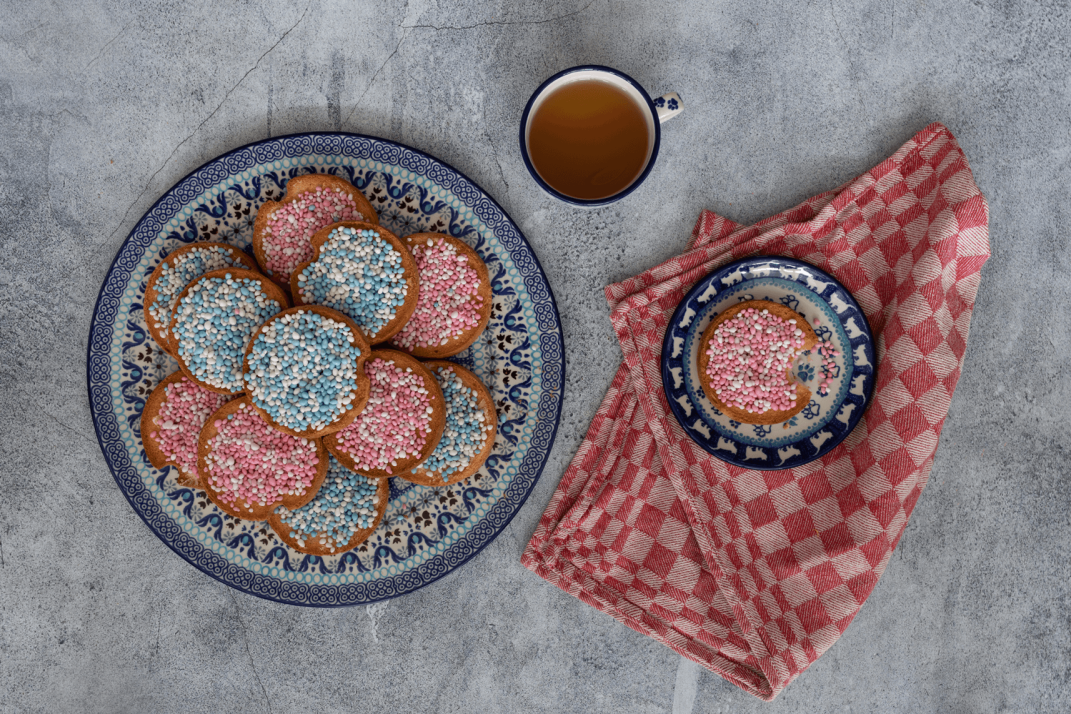



What:
Dough dome filled with fragrant rice, chicken, currants and nuts.
When:
Wedding
Why:
The nuts represent the husband and wife, the currants their prospective children. The pastry shapes the roof of the house.




What:
Shiny red boiled eggs
When:
The evening before Easter Sunday
Why:
The eggs are tapped together, while one person says: “Christos Anesti!” (Christ has risen!), while the other person says: “Alithos Anesti” (Indeed he has risen!). This symbolises Christ’s emergence from the tomb and the blood that he lost.
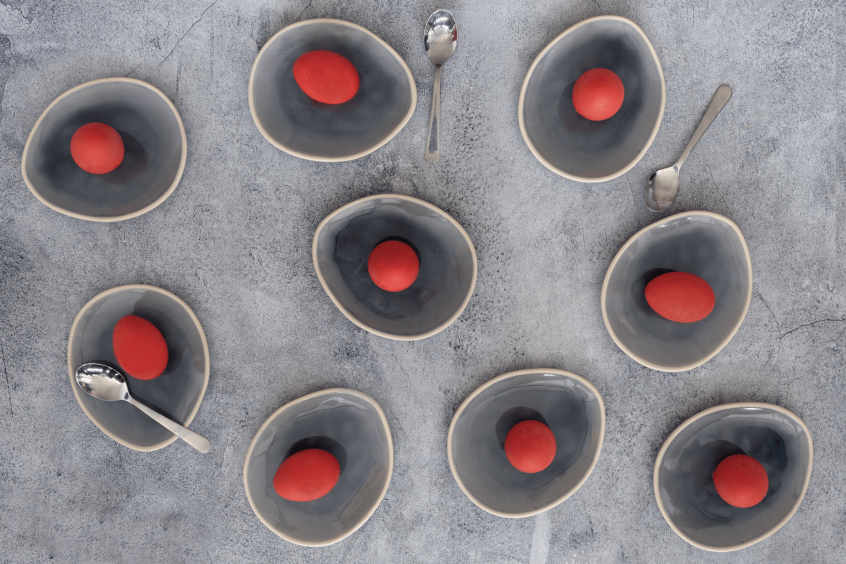



What:
Filled pork paw called zampa,
and boiled lentils
When:
New Year’s Eve
Why:
The lentils symbolize prosperity. In ancient Roman times, people would fill their pouches with lentils, hoping one day they would turn into coins.




What:
Diamond shaped dessert made out of cashew nuts, sugar, cardamom and ghee, covered in edible silver.
When:
Diwali/Ganesh Chaturthi
Why:
Kaju Katli brings good luck and prosperity to the home where it’s served. The edible silver signifies luxury and appreciation for the ones eating it.
